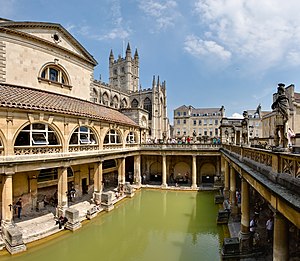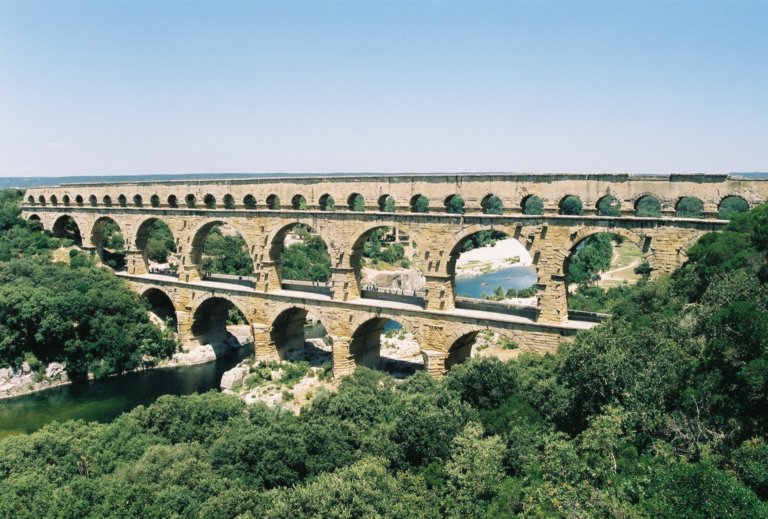These architectural titans gave us the knowledge of concrete, plumbing, etc, etc, etc. These guys are at the top for their genius in engineering, measurements, and more.
Enough talking, let's take a look at some of the most impressive structures I have laid my eyes on.
But before we start, we need an intro.
Rome basically was the melting pot of architecture, art, construction, religion, and pretty much everything else. They took the best of everything and combined it. They use the arch, the vault, and concrete to build their cities.
An arch is a curved architectural element used to span an opening, like so:

A vault is an arched roof covering made of brick, stone, or concrete, like so:

Now, onto the buildings.

The Colosseum had walls of concrete, towering at 144 ft with 16 stories, able to hold 50,000 people. Inside were niches that had painted statues in them. Some of these ornate pieces of art had glass eyes.
In total, three emperors, Vespasian, Titus, and Domitian, were involved in the construction.
When it rained, they would cover the top with a tarp called velerium, and it was so heavy, it took 1000 men to lift it.

The Pantheon was a temple for every god they could find. Its walls are twenty ft thick the floors are 144 ft in diameter, and the dome is coffered, or it has boxes in it. The oculus, or opening at the top, is 30 ft in diameter.
When it rained, they had built a drainage system into the floors so it wouldn't flood the building.
The portico, or the porch, of the Pantheon was built in the Corinthian order. The doors and columns were once covered with gold.

The Roman Baths were visited twice a day for hygienic purposes. They had three different temperatures of water, which of course they named their three different baths for; caldarium for hot, tepidarium for room temperature, and frigidarium for cold. They also had mineral baths.

The Arch of Constantine celebrated Constantine's assumption of power. These types of arches, called Triumphal Aches, were used to commemorate emperors. Um...that's it.

The Forum Romanum was used for discussion halls, shops, and political or religious centers.
The city planning of any Roman architect was carried on into the future in our own time period. Within the plans included the following:
- sewers
- running water
- squares
- paved streets
- sectioned cities

Roman houses were typically two stories and built around a central garden, and each house had rooms for certain things, unlike other typical houses.

Roman aqueducts are definitely my favorite structures in all of Roman architecture combined. This marvel of engineering transported water to cities from high mountains using gravity alone. Since aqueducts were built from concrete, a material that expands and contracts to heat, the aqueducts were only repaired between April 1-November 1.
And now we move on to sculptures.

The Head of Augustus had eyes covered in a glass paste. Aside from saying how creepy it looks, that's all I know about it.

Constantine the Great had a statue 30 ft tall built in 50 AD. His eyes were not only made large so people could see him down from the ground, but also to show his eyes as windows to the soul, since he is the emperor who legalized Christianity.

Equestrian Statues were very common in ancient Rome. The one above is Marcus Aurelius.

The Column of Trajan had something like a comic strip wrapped around it showing his timeline, all of his victories. Inside are Trajan's ashes.
And now for paintings and other stuuf like that.
Paintings were just used for decoration, family protraits, faux landscape, etc. Frescos, or fresh, paintings were made when paint was used on wet plaster.
Mosaics were pictures made out of small stones. The smaller stones were 150 tiles per 1 square cm. Wow.
And now an extra bit.
The city of Pompeii was preserved by the volcanic ashes, petrifying eveything, right down to the last man. Literally. Cool, but disturbing.
That's all for now, I may see you next time. Or will I?
Yes, I will. Alright, see ya later!